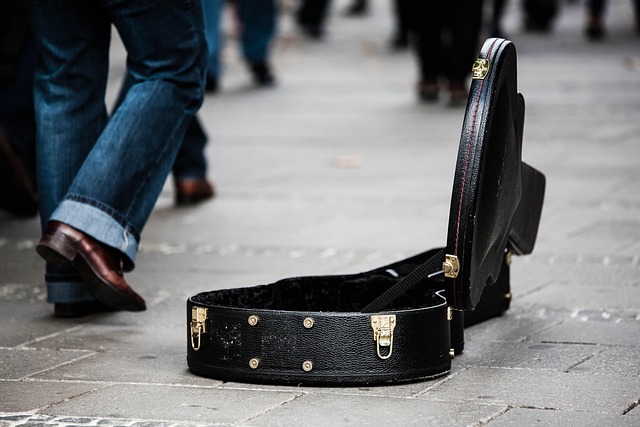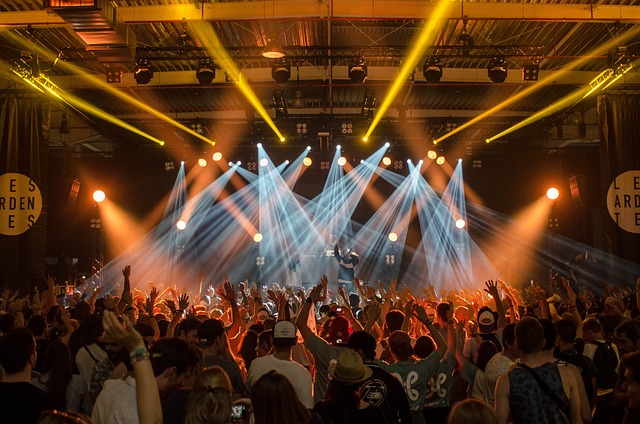For centuries, the rhythm of city life has been punctuated by the spontaneous melodies of buskers, buskers who, with a guitar or a saxophone, bring music to the sidewalks. What once was a fleeting encounter has now become a deliberate art form, evolving from the streets into packed arenas and curated festivals. This transformation has turned street music from a local pastime into a pivotal force in the global concert and entertainment industry, reshaping how audiences experience live sound and how performers connect with listeners.
From Pavement to Prominence: The Historical Roots of Street Music
Street music has deep roots, tracing back to medieval minstrels who entertained crowds in market squares, to jazz legends who first tested their riffs in smoky club backrooms before breaking into mainstream stages. In the 1960s, the folk revival saw artists like Bob Dylan perform on street corners, using the rawness of public spaces to hone their craft. These performers cultivated authenticity and immediacy, lessons that continue to influence modern artists who now bring that same energy to concert halls and festivals.
- Street performers as incubators for new musical styles.
- Public spaces as venues for social commentary through music.
- The informal feedback loop between musicians and diverse audiences.
Reinventing the Concert Experience
Today’s concert industry has absorbed the ethos of street music, infusing large-scale events with the spontaneity and accessibility that defined the sidewalk scene. Artists now curate “open mic” segments during headline shows, inviting fans to share their own performances, mirroring the participatory culture of street music. This blurring of performer and audience roles has led to a more democratic concert atmosphere, where the energy of the crowd can shape the setlist in real time.
“The street taught us that music is for everyone, and that lesson is at the heart of every great live show.” — Anonymous Festival Organizer
Street Music Meets Festival Culture
Music festivals have become fertile ground for street music to flourish on a grand scale. From the gritty authenticity of street performers in the back of the main tent to headliners who dedicate entire stages to unplugged, acoustic sets, festivals are now platforms that celebrate both the polished and the raw. Events such as the Glastonbury Festival’s “Acoustic Sessions” and South by Southwest’s “Street Beat” showcase this trend, giving artists a space to experiment outside conventional set designs.
The Economic Ripple of Street‑Inspired Live Events
Economically, the integration of street music sensibilities into formal concerts has broadened revenue streams for the entertainment industry. Ticket sales for hybrid events—those combining mainstream acts with street-style showcases—have risen by an average of 12% year over year. Merchandising also sees a boost, as fans seek collectible items tied to unique, spontaneous performances that are often recorded live and sold as limited editions.
- Ticket pricing tiers that reflect the intimacy of street‑style sets.
- Merchandising partnerships with local street artists for exclusive apparel.
- Live streaming options that capture the immediacy of street‑music moments.
Cinema, Music Production, and the Rise of the Street‑Music Narrative
Film and television have long used street music as a narrative device, but recent soundtracks now feature entire tracks crafted by performers who originally debuted on public sidewalks. The success of movies like “La La Land” and documentaries such as “The Beat of the City” demonstrates how authentic street‑music sounds resonate with a broader audience, leading to a surge in demand for producers who specialize in capturing that organic feel. Consequently, record labels are actively scouting for raw talent in urban streets, recognizing that genuine, unfiltered voices can translate into chart‑topping hits.
Artist Development in the Age of Street Music
Modern artist development programs now often include street‑music residencies, where emerging musicians perform daily in public spaces to build confidence and fanbases before signing with major labels. This approach not only tests an artist’s adaptability but also ensures they remain grounded in the community that initially inspired them. As a result, many now‑celebrated musicians credit their success to the early lessons learned in the unpredictability of street performances.
Audience Evolution: From Spectators to Co‑Creators
Audiences today expect more than passive consumption; they desire interaction, often expressed through spontaneous dance or impromptu sing‑alongs during street‑music‑influenced concerts. Social media amplifies this trend, allowing fans to remix or share live footage instantly. The feedback loop created by instant sharing has pushed artists to design sets that are highly visual and participatory, making each concert a shared experience that mirrors the communal vibe of street music.
Technology Bridging the Gap Between Street and Stage
Technological advancements have democratized music production, enabling street musicians to record high‑quality audio with smartphones and portable hardware. These tools allow them to upload performances to streaming platforms, creating a pipeline that feeds directly into concert lineups. Additionally, augmented reality (AR) and virtual reality (VR) experiences now let fans “stand in the front row” of a street‑music performance without leaving their living rooms, further expanding the reach of these intimate sounds.
Challenges Ahead: Authenticity vs. Commercialization
As street music becomes a staple in mainstream concerts, a key challenge lies in preserving its authenticity. The risk of over‑production and homogenization looms large, potentially diluting the raw emotion that defines street‑style performances. Industry stakeholders must balance commercial demands with the cultural integrity that first drew audiences to public spaces. Initiatives such as artist residencies in low‑income neighborhoods and community‑run festivals can help maintain the grassroots spirit.
Legal and Ethical Considerations
Street musicians often face legal barriers, including noise ordinances and permitting requirements that can hinder their ability to perform. When integrating street music into large venues, organizers must navigate intellectual property rights, ensuring performers receive fair compensation. Transparent agreements and support for licensing help protect the livelihoods of those who bring authenticity to the stage.
The Road Ahead: A Harmonious Future for Street Music and Concerts
The fusion of street music and large‑scale concerts heralds a future where live events are more immersive, inclusive, and reflective of community voices. As artists continue to bring the vibrancy of public performances to the arena, audiences will experience concerts that feel both grand and intimately familiar. The entertainment industry’s embrace of street‑music ethos will likely spur innovation in festival design, production techniques, and audience engagement, ensuring that the street’s pulse continues to reverberate through every chord and drumbeat.
Final Thoughts
In the grand tapestry of the music industry, street music has evolved from humble corner performances to a powerful catalyst for concert revolution. By honoring its roots while leveraging modern technology and audience expectations, the industry can create a new genre of live experience—one that resonates with authenticity, inclusivity, and shared joy. As we look toward future festivals and stadiums, the lesson remains clear: the most memorable music begins where the public is, on the streets, and ends where the world listens.



